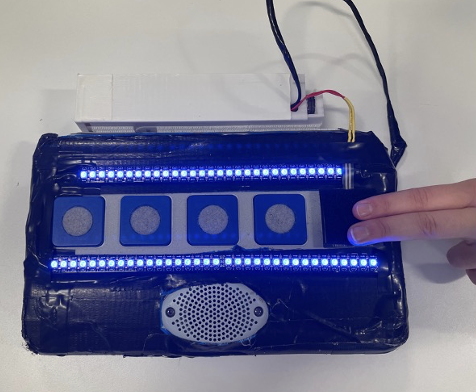Modified ProxTalker
Modifying an existing ProxTalker according to the clients needs.

The Need
Communication amongst hearing and non- hearing individuals is vital for student education and human wellbeing. The Perkins School for the Blind works with individuals aged 3-22 years old who are blind, visually impaired, or deaf blind. A speech and language pathologist approached Enabling Engineering with a request to adapt a ProxTalker device for an 18-year-old student who is diagnosed with cerebral visual impairment (CVI). Currently, the ProxTalker device enables users to communicate with others using RFID tags linked to common words and phrases. The RFID tags can be put together by the user to build common sentences. The ProxTalker device then audibly reads the message out loud to the intended audience.
The Solution
As the student user is deaf, the client had requested the addition of visual feedback such as light responses to ensure that the user’s message is heard. Our goal was to adapt the current ProxTalker device to best fit the needs of the client and student. To address the need of the student at the Perkins School for the Blind, we modified the ProxTalker device to include visual cues such as lights and LEDs. In designing the modified ProxTalker, there were numerous qualities that must be considered like safety, cost, sturdiness, performance and many more.
The Team
Rebecca Ramos
Dorthea Geroulakos
Fahia Bashar
Xinyi Looi
Prithika Jean

